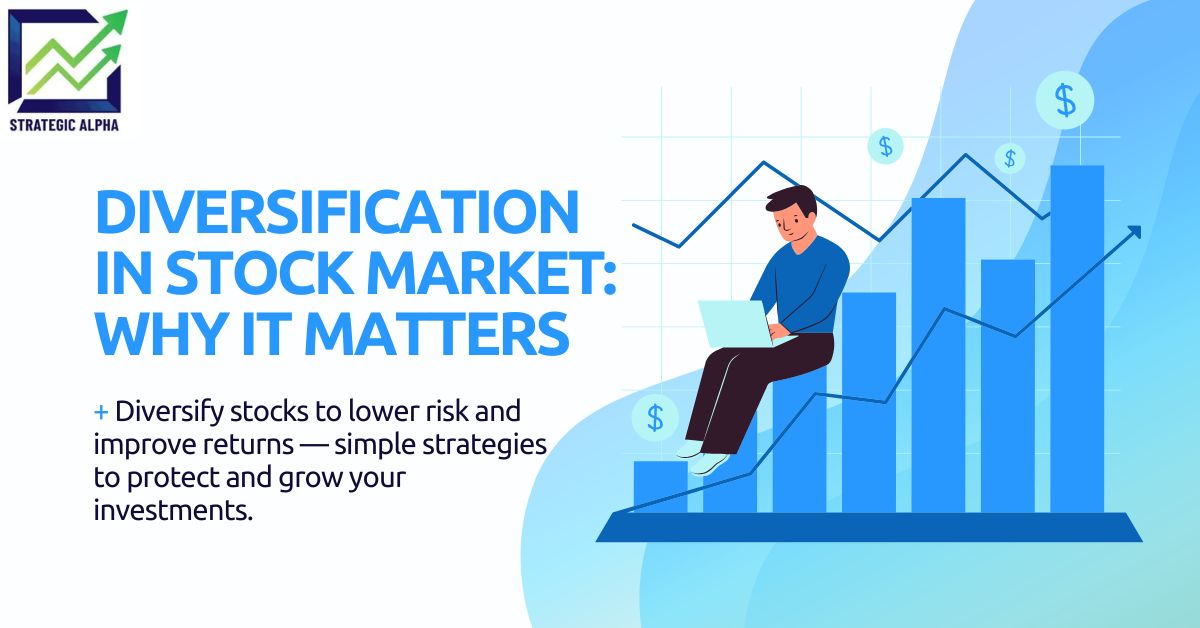The stock market is full of investment choices. But every investor ultimately faces one challenge, and that’s choosing between short-term and long-term investments. Though there’s no single right answer to short-term vs long-term investment strategy. Because the right strategy depends on various factors.
The ideal investment strategy for you depends entirely on several key factors that include your financial goals, risk tolerance, and your time horizon. Understanding the differences between these two approaches is the essential first step towards building a successful investment portfolio.
What is Short-Term Investment?
Short-term investment involves buying and selling of assets within days, weeks, or months, generally within a period of less than 3 years. The primary goal of short-term investing is to capitalize on short-term market fluctuations with an aim to earn quick profits.
For example, if someone is planning to buy a car in a year or two, they might invest their savings into a high-yield savings account (HYSA) or a short-term Certificate of Deposit (CD). These may not come with as high a risk as day trading stocks.
In day trading stocks, the investor buys and sells the same stock within a day with the aim of profiting from minor price movements in the stock. Day trading involves constant monitoring, a high level of skill, and the ability to handle risk.
Advantages of Short-Term Investment
1. High Liquidity
Short-term assets are highly liquid and can be converted into cash quickly. This is helpful if you are investing for short-term goals, such as buying a car or planning and saving for a vacation.
2. Quick Returns
If you have the right skill and knowledge to time the market right, you can earn profits at a faster rate with short-term investments.
3. Flexibility
Short-term investments provide you with the flexibility to exit if there is any huge market risk or to reallocate your funds based on your changing financial needs.
Disadvantages of Long-Term Investment
1. Higher Risk & Stress
Since short-term trading involves the quick buying and selling of assets, a sudden dip or market volatility can lower your potential profits. This requires active monitoring and comes with high stress.
2. High Tax Rates
Short-term gains (one year or less) are generally taxed at higher income tax rates, which are often much higher than the long-term capital gains.
What is Long-Term Investment?
A long-term investment strategy involves holding your assets for a longer duration, usually for decades or more. The main goal here is not to chase quick, short-term gains but to benefit from the power of compounding for exponential growth and the historical trend upwards over long periods. For example, if you want to save for long-term goals like a retirement plan or saving for children’s education, long-term investments may be more suitable for you.
Advantages of Long-Term Investment
1. The Power of Compounding
This is the factor that leads to higher returns over time with long-term investment. You not only earn returns on your initial investment but also on the returns you have already earned. This helps your money grow exponentially over the years.
2. Lower Risk
While the investment market is full of short-term dips, historical data shows that the market has recovered consistently and has offered growth for long-term investors. The longer time allows you to recover from downturns, ultimately lowering the overall risk.
3. Tax-efficient
Long-term capital gains (assets held for more than a year) are generally taxed at significantly lower tax rates than short-term gains. This means you will have more profits.
4. Less Stress & Effort
With long-term investment, you don’t need to constantly monitor daily market fluctuations. This means you will have less stress or quick-decision pressure.
Disadvantages of Long-Term Investment
1. Low Liquidity
Long-term investments often come with lock-in periods, which means your money is locked for an extended period.
2. Requires Longer Time For Growth
With long-term investments, it often takes several years for you to see substantial growth. It takes time for compounding to grow your money. So, patience is essential if you are aiming to achieve your long-term financial goals.
3. Requires Discipline
Long-term investment can be emotionally challenging, as during market downturns or recessions, you might sell out of panic when your portfolio value goes down.
4. Penalty For Early Exit
Exiting or redeeming long-term investments like mutual funds before the specified duration may incur an exit load or a penalty. Although many mutual funds offer high liquidity now, it’s essential to properly check the fund’s particular terms and conditions when planning to invest for the long term.
Short-Term vs Long-Term Investment: Key Differences
| Feature | Short-Term Investment | Long-Term Investment |
| Time Horizon | Generally under 3 years | Generally ten years or more |
| Investment Goal | To earn quick gains by capitalizing on market fluctuations | Long-term wealth creation, or financial stability at the time of retirement |
| Liquidity | Highly liquid and hence can be easily converted to cash | Low liquidity, i.e. funds are locked in for an extended period, and early exit incurs a penalty fee |
| Risk Profile | Higher risk, as short-term market fluctuation or quick market swings can lead to sudden losses | Lower risk over time, as time allows for recovery from market downturns |
| Taxation | Profits are generally taxed at higher rates if assets are held for less than one year | Long-term capital gains are taxed at lower rates if assets are held for longer than one year |
| Required Effort | High efforts and active asset management are required, as you need to constantly monitor market trends. | Requires less effort, but requires discipline and patience instead |
Short-Term vs Long-Term Investment: The Deciding Factor To Achieve Your Financial Goals
- If your goal is in the near future: If you want to save and invest for short-term financial goals (1-3 years), such as for a wedding fund, vacation, gifts, or emergency fund, then short-term strategies may work for you.
- If your goal is decades away: If you want to save for retirement or for a child’s college fund, then consider investing for the long term as the power of compounding will grow your money exponentially over the years.
A Diversified/Balanced Portfolio: The Ideal Approach To Investing
The best approach, which is generally recommended by experts, is to use a balanced approach to investing. You should put the majority of your money towards long-term goals. And at the same time, you could invest a small part of your savings in short-term liquid assets that could help you during emergencies or forthcoming financial needs. With this hybrid strategy, you can enjoy both the growth potential of long-term investment while safeguarding some amount of money to meet emergency fund needs.
Conclusion: Get The Right Investment Guidance With Strategic Alpha
By now, you must have learnt that the best investment strategy involves a blend of both short-term and long-term investments. But knowing how to balance your portfolio without taking unnecessary risks might feel overwhelming for some investors, especially beginner investors. If you are also overwhelmed by the choices, you can join Strategic Alpha’s community of learners and investors. You can learn from investment experts (with decades of experience) and get the right guidance to create a personalized plan that helps you achieve your financial goals. Thus, talk to our expert today and secure your financial future.








